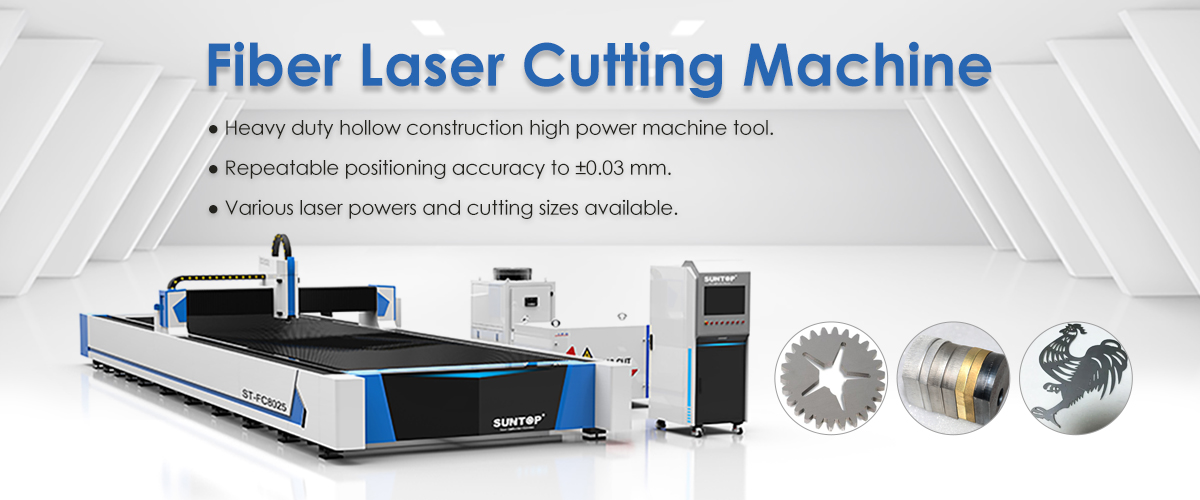1. The importance of regular maintenance
Regular maintenance of laser cutting machines is of great significance to ensure the long-term stable operation of equipment, improve cutting quality and extend the life of equipment. Specifically, the main advantages of regular maintenance include:
● Improve production efficiency:
Through regular maintenance, potential problems can be discovered and repaired in time, and unexpected failures of equipment during production can be avoided, thereby reducing downtime and improving production efficiency.
● Ensure cutting quality:
The stable operation and performance of the equipment can ensure the accuracy and quality of each cut. Regular maintenance can prevent problems such as uneven cutting and burrs caused by aging equipment.
● Extend the service life of equipment:
Regular maintenance and care can delay the wear and aging of equipment, reduce the frequency of component replacement, and thus reduce the overall operating cost of the equipment.
● Improve safety:
Regularly checking various parts of the equipment, such as the laser optical path and safety protection facilities, can timely discover and eliminate safety hazards and avoid accidents.
● Reduce maintenance costs:
Through preventive maintenance, measures can be taken before the problem develops into a major failure, thereby reducing the cost of repairing and replacing damaged parts.
2. Laser cutting machine maintenance plan
In order to ensure the efficient operation of the laser cutting machine, it is recommended to develop and implement a maintenance plan. A typical maintenance plan may include the following:
● Daily maintenance:
Clean the cutting table and the outside of the equipment to remove dust and debris.
Check whether the cooling system of the laser light source is working properly and clean the filter of the coolant.
Confirm whether the laser light is normal and ensure that the light path is not blocked.
● Weekly inspection:
Check the cutting nozzle and lens, clean possible slag and contamination to ensure the beam quality.
Check and tighten all fasteners to prevent loosening caused by vibration.
Check the pressure and quality of the gas source to ensure that the flow rate and pressure of gases such as nitrogen or oxygen are within the standard range when they are ejected.
● Monthly maintenance:
Calibrate and record the output power of the laser light source to ensure that it is within the design range.
Check the transmission system, including belts, gears and other components to ensure that there is no wear and abnormal sound.
Update and back up the software system of the laser cutting machine to ensure data security.
● Quarterly inspection:
Perform a comprehensive performance evaluation of the equipment and record changes in cutting quality and efficiency.
Clean or replace the coolant in the cooling system to prevent aging and contamination.
Check the electrical system to ensure that all wiring and switches are working properly, and clean the electrical control cabinet.
● Annual maintenance:
Hire professionals to conduct a comprehensive overhaul of the laser cutting machine, including the laser, optical components and mechanical system.
Perform aging tests and performance evaluation on the entire machine, and replace components preventively when necessary.
3. Regular inspection of the status of equipment and components
Regular inspection of the status of equipment and components is essential to maintain the optimal operating state of the laser cutting machine. The inspection includes:
● Laser light source:
Regularly monitor the power and wavelength of the laser, and adjust the parameters in time to ensure stable output.
● Optical components:
Regularly check and clean the lenses and lenses to ensure that there is no dust and contamination affecting the laser quality.
● Mechanical system:
Check the lubrication status of the guide rails, sliders and transmission devices to ensure smooth operation and reduce wear.
● Electrical system:
Check whether the electrical wiring and switches are normal, especially pay attention to whether there are signs of aging or damage.
● Cooling system:
Check the water temperature, flow and circulation status of the cooling system to ensure normal heat dissipation of the laser.
● Gas source system:
Regularly check the working status of the gas filter and pressure regulating valve to ensure the quality of the supplied gas.
Through regular maintenance and equipment status inspection, the operating reliability of the laser cutting machine can be effectively improved to ensure its continuous and stable performance in production.
Optimizing the cutting quality of laser cutting machines is crucial, as it directly affects production efficiency, product quality, and corporate competitiveness. Regular maintenance and inspections can detect potential problems in a timely manner, thereby ensuring that the equipment is always in the best condition and achieving accurate and efficient cutting results.
At the same time, manufacturers and operators are encouraged to continuously learn new technologies, improve operating procedures, and upgrade their skills to adapt to the needs of the rapidly developing industry. Continuous learning and improvement are the key to improving cutting quality and overall production capacity.






















